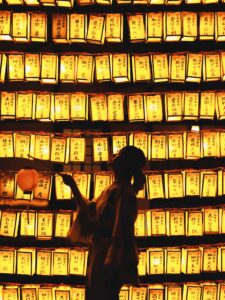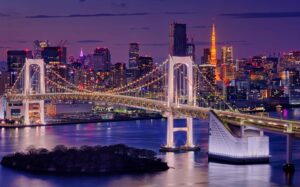4 Photogenic Shrines to Visit in Tokyo
Tokyo is home to many beautiful shrines that offer a taste of Japanese history and culture.
For foreign visitors in particular, Japanese shrines are both mysterious and photogenic.
We have carefully selected shrines that you should visit when sightseeing in Tokyo, including access information, historical background, highlights, and seasonal events.
Also, have a look at our blog on What's the Difference Between Shrines and Temples in Japan?
Contents
- Four Photogenic Shrines in Tokyo
- Manners for Worshipping at Shrines
- What to Bring to a Shrine
- Summary
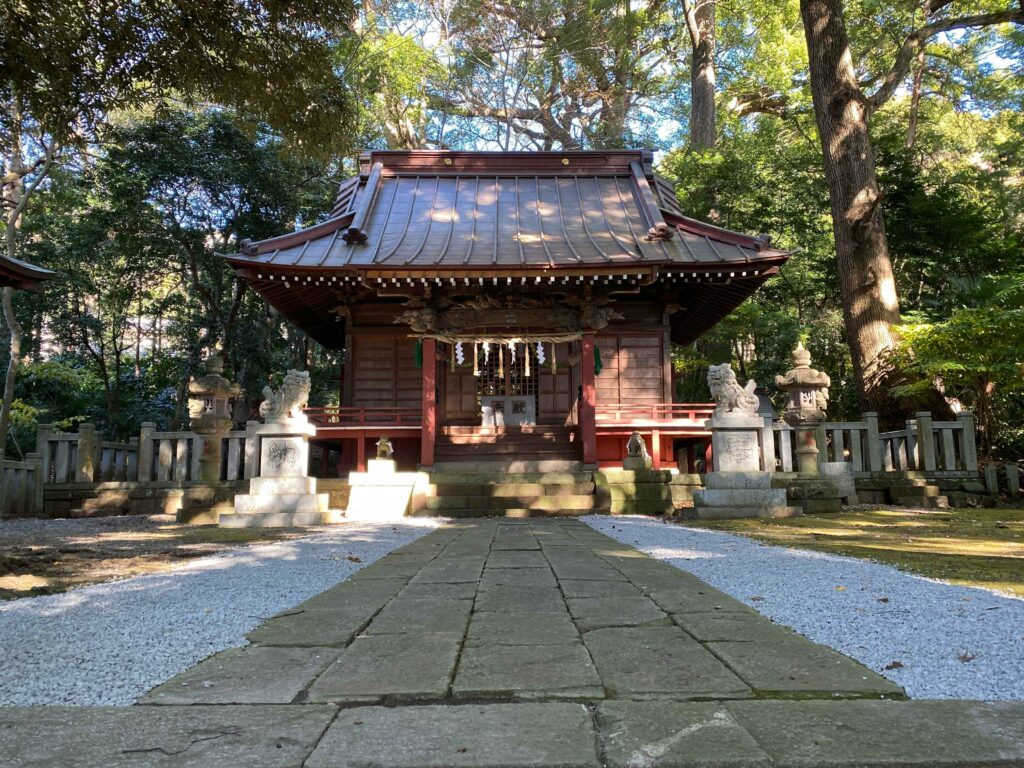
1. Four Photogenic Shrines in Tokyo
Meiji Shrine
Access:
5 minute walk from Harajuku Station on JR Yamanote line
3 minute walk from Meiji Jingu-mae Station on Tokyo Metro Chiyoda line and Fukutoshin line
History
Founded in 1920, Meiji Jingu is dedicated to Emperor Meiji and Empress Shoken.
Highlights
1. The vast “Chinju no Mori” (Forest of the Goddess of Mercy)
Itis a man-made forest of approximately 700,000 square meters, created to be an “eternal forest” by planting approximately 100,000 trees donated from all over the country.
The forest creates a solemn and austere atmosphere.
2. Otorii
The largest torii gate in Japan of this type.
It is 12 meters high, with 9.1 meters between pillars, 1.2 meters in diameter, and 17 meters long, making it an impressive sight.
3. Gyoen
A moderately landscaped garden that fully creates the feeling of taking a leisurely stroll in nature.
Meiji Jingu Shrine Official Website (EN)
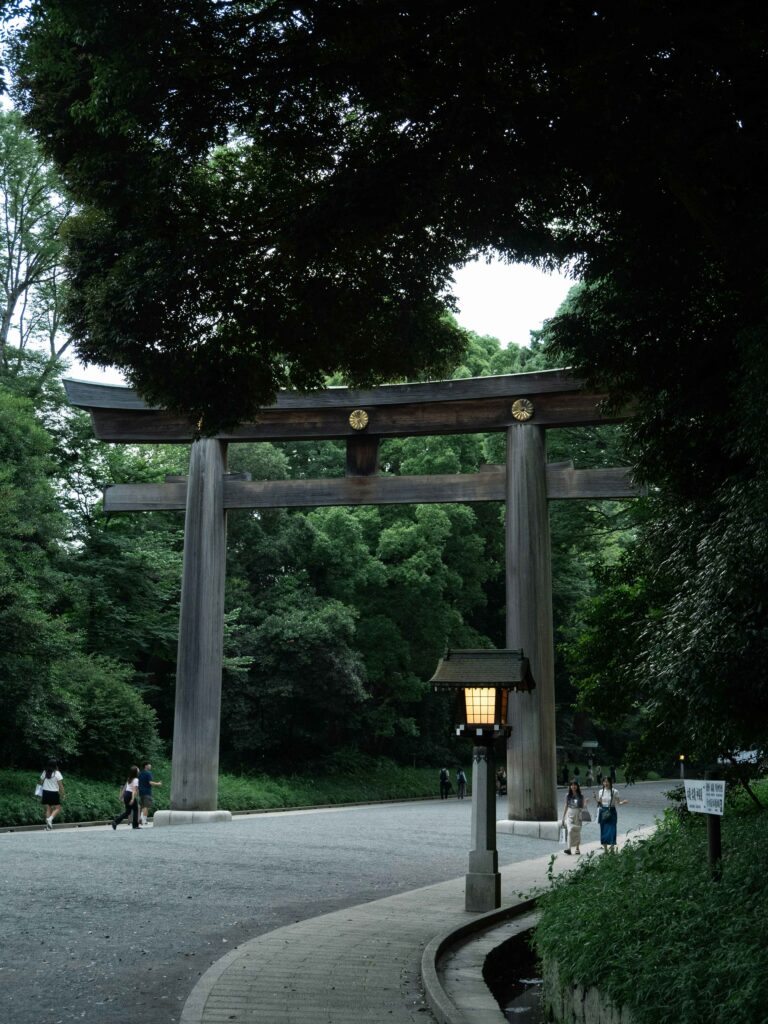
Asakusa Shrine
Access: 7-minute walk from Asakusa Station on the Tokyo Metro Ginza Line
History
The temple was founded in 1649 by Tokugawa Iemitsu, the third shogun of the Edo Shogunate.
Tokugawa Iemitsu was responsible for completing Japan's isolation from the rest of the world and for strengthening the power of the shogunate by controlling the feudal lords (daimyos).
The three local deities who inspired the construction of Sensoji Temple, famous for its Kaminarimon (Thunder Gate), are enshrined at Asakusa Shrine.
After surviving repeated fires, wars, and the Great Kanto Earthquake, Asakusa Shrine was designated a National Important Cultural Property in 1951.
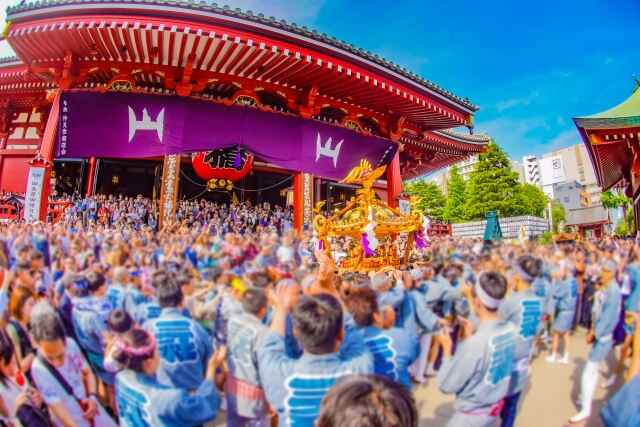
Highlights
1. Sanja Matsuri (Sanja Festival)
The Sanja Festival is held every May and is one of the most popular festivals in Japan, attracting approximately 1.8 million people to the town of Asakusa during the festival period.
In addition to the three “mikoshi” (portable shrines) of the Asakusa Shrine, each town in the Asakusa area has its own “mikoshi”, and more than 100 portable shrines parade through the town.
For more information, have a look at Sanja Festival : A Traditional Festival in Tokyo
2. The bright vermilion shrine pavilion
The entire building was repaired in 1996, and the vivid colors were restored at a total construction cost of 350 million yen.The stunning contrast is sure to be a sight to behold.
Asakusa Shrine Official Website (EN)
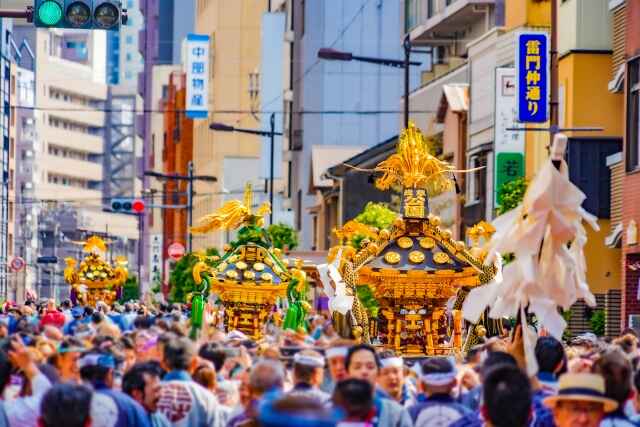
Hie Shrine
Access: 3-minute walk from Tameike-Sanno Station on Tokyo Metro Namboku Line and Ginza Line
History
The shrine was worshipped as the guardian deity of Tokugawa Ieyasu during the Edo period.
After the shrine was destroyed by fire in 1657, Tokugawa Ietsuna, the fourth shogun of the Edo Shogunate, rebuilt the shrine at its present location.
Tokugawa Ietsuna became the successor to the shogunate at the age of only 10, after his father Iemitsu died of illness at the age of 48.
Ietsuna is famous for his change from the “Budan seiji” (military rule) to “Bunji seiji” (government by courtesy and law, not by military force), as his father did.
Highlights
1. Sanno Matsuri (Sanno Festival)
The Sanno Matsuri, held in June, is one of the three major festivals in Japan that has continued since the Edo period.
Visitors can experience the colorful and diverse culture of Japan through traditional performing arts, tea ceremonies, and other events on the festival grounds.
Every other year, the Shinko-sai Festival is also held at the same time.
The magnificent 300-meter-long procession of people dressed in imperial court costume and carrying a palanquin on their shoulders will take you back in time to the Edo period.
2. The Treasure Hall Gallery
The Treasure Hall Gallery, located in front of the temple grounds, displays swords designated as important cultural properties and national treasures, as well as red seal certificates and other items.
History buffs are encouraged to visit!
3. Senbon-torii
Senbon-torii is located on the approach to Sanno Inari Shrine, which is within the precincts of Hie Shrine.
The beautiful Senbon-torii gate, with its beautiful vermilion color, is one of the most popular photo spots in Hie Shrine.
Hie Shrine Official Website (JP)
Kanda Shrine
Access: 5 minute walk from JR Ochanomizu Station
History
Originally built in 730 near the present Otemachi, Chiyoda-ku, Tokyo, it was moved to its present location to protect Edo Castle after the Edo shogunate was established.
Highlights
1. Beautiful shrine pavilion
This valuable building was designated as a National Tangible Cultural Property in the year commemorating the 400th anniversary of the founding of the Edo shogunate.
The shrine is beautifully designed in the traditional architectural style of a Shinto shrine and is a must-see for its beauty.
2. Collaborative events with anime and game culture
Unusual for a shrine, this spot has become a popular sacred place for anime in recent years.
Ema, amulets, and other goods made in collaboration with anime are available for purchase.
The Kanda Festival is held every odd-numbered year in May and features a procession of people dressed in Heian-period costumes and a parade of about 100 portable shrines.
This is a must-see event that fills the town with more than 300,000 spectators each time!
Kanda Shrine Official Website (JP)
2. Manners for Worshipping at Shrines
Japanese shrines have a unique manner of worship.
Knowing the correct etiquette will help you enjoy a more sacred atmosphere.
Here are some tips!
- Bow lightly before passing through the torii gate
- Avoid walking in the center, as it is considered to be “the path of the gods"
- Cleanse your hands and mouth at a water fountain
- When leaving the shrine, bow in front of the torii gate
3. What to Bring to a Shrine
Here are some items that are useful to bring when visiting shrines.
- Small change: Be prepared to make money offerings. If you are praying for good luck, it is important to bring 5 yen or 50 yen coins!
- Handkerchiefs and tissues: You can use these after washing your hands at the hand-watering basin.
- Sneakers or flat shoes are recommended, as there are many gravel paths and stairs in the shrine grounds.
- Cameras and smart phones are essential for documenting the beautiful shrine scenery! When taking pictures, be careful not to disturb other passersby.
- Folding umbrella: It is a good idea to have a folding umbrella in case of sudden rain.
- Goshuincho (red seal book): Collecting stamps from shrines you visit is a great way to remember your trip.

4. Summary
Tokyo is home to many shrines that combine beauty and history.
Each of the four shrines introduced in this article has a different charm, and you will discover something new each time you visit.
In addition, visiting during the event season will allow you to enjoy Japanese culture even more.
Please enjoy your visit to shrines in Tokyo by observing good manners and preparing useful items for your visit!
What are we?
We run Ninja Experience Cafe in Tokyo, Kyoto and Osaka, Japan.
Here you can immerse yourself in Japanese culture through experiencing ninja training.
Both adults and children are welcome to try their hand at defeating the ninja master inside the cafe.
The cafe is an indoor interactive zone, so it can be enjoyed even on rainy days.
If you are thinking "I want to be a real ninja too!” or interested in becoming a real ninja, please visit us.
Reservations can be made here.
Unauthorized copying and replication of the contents of this site, text and images are strictly prohibited.

